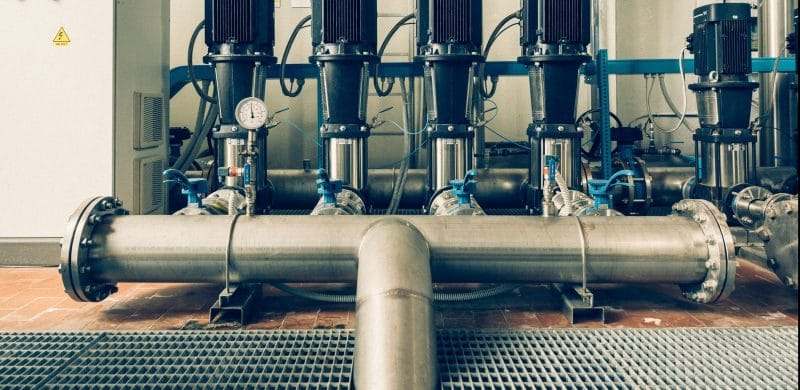Solution provider

We are a global water technology company committed to pioneering solutions to the world’s water and climate challenges and improving the quality of life for people.
Case
Non-revenue water
Drinking water treatment
Groundwater management
+4


We are a global water technology company committed to pioneering solutions to the world’s water and climate challenges and improving the quality of life for people.
Add the case to your visit request and let us know that you are interested in visiting Denmark
Demand for water is outstripping supply. According to the World Economic Forum, the gap between the two will reach 40% by 2030 if current consumption patterns and practices continue[1]. Drivers of water scarcity include population growth and enhanced prosperity, which results in increased water consumption in the form of water-guzzling household appliances such as dishwashers, washing machines, showers, and flushing toilets. As our wealth grows, we also tend to eat more meat, which is water-intensive to produce. In addition, our consumption of water for leisure purposes increases as we become wealthier – for gyms, water parks, golf courses, swimming pools etc.
There are multiple reasons why we need to reduce water demand, including, but not limited to, securing future water supplies, adapting to climate change, preserving the natural environment and biodiversity, reaching net zero, enabling future growth etc.
What many may not know is that a significant share of the water supply goes missing each day. Known as Non-Revenue Water (NRW), this is water that is dispersed through the water network, but is either lost due to leaky pipes, stolen or unaccounted for. It is a recurring problem for municipal water authorities and a common topic for discussion when it comes to issues of water scarcity. The IEA estimates that worldwide, 34% of all water worldwide falls prey to NRW[2]. In Europe alone, water lost as a result of leaks in the water distribution network amount to approximately EUR 80 billion annually[3].
Meeting the ever-growing demand for water will require a concerted approach to reducing NRW. How can we achieve this and what are some of the solutions available for minimising NRW?
[1] https://www.weforum.org/impact/sustainable-water-management/
[2] https://www.fluencecorp.com/what-is-non-revenue-water/
[3] Ibid
The towns of Montodine, Credera, Moscazzano, Ripalta Arpina and Ripalta Guerina in Italy’s Lombardy region derive their water supply from the same network, which serves 6,580 inhabitants. Supply pipes measuring 10.3 kilometres distribute approximately 670,000 m3 of water annually that is sourced from two wells. Fuelling this demand is 275,000 kWh of energy.
While the local water utility has always taken great care to utilise water as efficiently as possible, connecting the town of Ripalta Guerina to the water supply network created challenges. Ripalta Guerina’s pipes were smaller than the rest of the network’s, meaning conventional methods to reduce the flow of the water pressure were not possible.
This challenge was affecting overall system efficiency. After thorough investigations, Grundfos engineers solved the issue via the use of their Demand Driven Distribution (DDR) controller.
Demand Driven Distribution is intelligent pressure management throughout a distribution network. The DDR system uses battery-driven network pressure sensors and places them in critical areas of the distribution network to obtain accurate data. This is then transmitted once a day, meaning energy requirements for running the system are extremely low. The measured data is then used to control the pumping station – ensuring less water leakage, longer system lifetime and reduced costs.
In Montodine, pressure transducers known as XiLog units were used at the ends of the water distribution network. Pressure values were then measured and sent to the DDR controller via a GSM network. The controller ensures optimum pressure, and by gradually ramping the pressure up and down, sudden momentum changes in the pipes were avoided. Doing so reduced water hammer (when moving water comes to a sudden stop) and thereby water losses.
Addressing NRW is a relatively easy way to reduce water scarcity. Eliminating water losses as a result of NRW will increase the available water supply and minimise pressure on local water resources. In addition, curtailing NRW makes water utilities more efficient, as they no longer lose the money they spend treating water and pumping it to residents but can recoup this through the sale of water.
In the specific case of Montodine, the installation of the DDR controller has meant that steady water pressure is maintained, and residents do not experience interruptions to the water supply. Furthermore, Grundfos estimates that the DDR controller has resulted in a reduction in real water losses of about 25,000 m3/year, which in terms of the total losses of the distribution system result in a reduction in water losses of approximately 30%. Energy savings of 17% have been realised and overall system efficiency has increased from approximately 0.4 kWh per m3 to the current 0.34 kWh per m3.